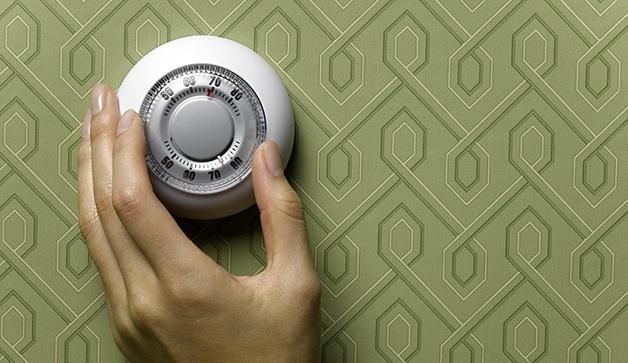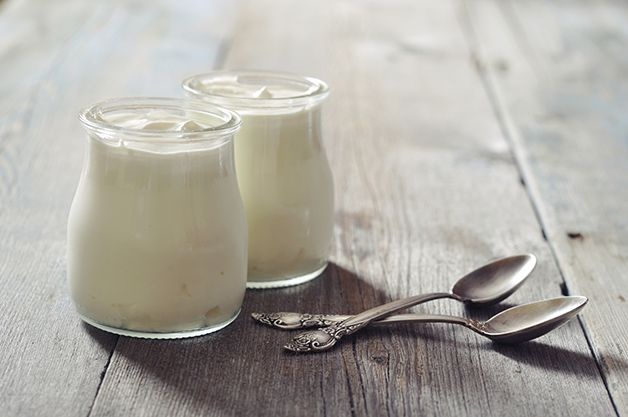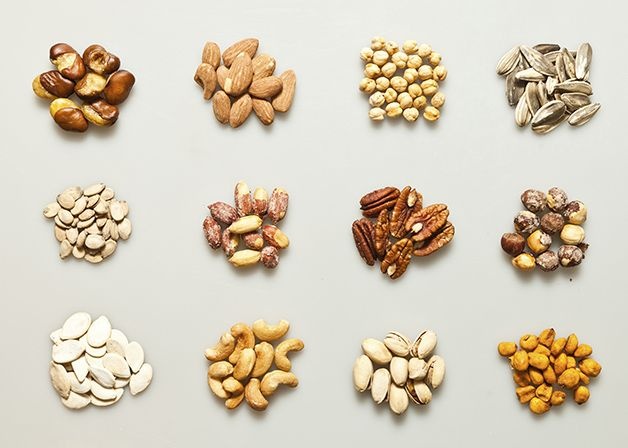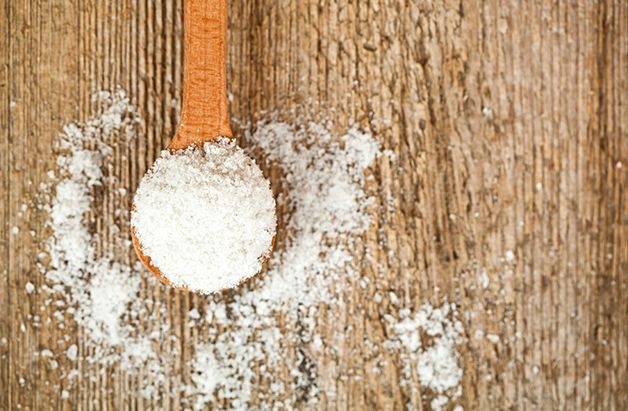There's a lot more to it than strength training and drinking green tea. Avoid these common mistakes to stoke your inner fire.

Yeah, yeah, yeah, you've heard it all before—all you need to speed up your metabolism is to build more muscle, drink lots of ice water, and try to spend less time sitting, right? But there are actually a ton of other factors to consider, and you might be messing with your metabolism without even realizing it. Read on to learn what you're doing wrong—and how to fix it.
You've banned dairy.

Muscle is essential for keeping your metabolism humming, and women who consumed 3-7 servings of dairy per day lost more fat and gained more muscle mass than women who downed less, according to research from McMaster University. "Dairy is a rich source of top quality proteins whey and casein," says Precision Nutrition coach Brian St. Pierre, RD. "Whey is very good at boosting protein synthesis, which helps build muscle, while casein stops protein breakdown and maintains the lean mass you have." Scoop up at least 3 servings of yogurt, milk, and cheese per day. (Check out these 10 portable protein-packed snacks for ideas.)
You crank up the heat.
To fry fat, dial down the thermostat. Participants who slept in bedrooms cooled to 66°F for a month doubled the amount of brown adipose tissue—a type of fat that burns rather than stores calories, researchers at the National Institutes of Health found. "Brown fat becomes more active in cooler temperatures to help keep us warm," says Aaron Cypess, MD, an endocrinologist at the NIH. So the more active your brown fat, the more calories you’ll burn throughout the day. While it's too early to say how long you need to spend in the cold to reap the calorie-burning rewards, turning down your heat, sleeping in cooler temps, and spending time outdoors (Cypess forgoes a coat when it's 55°F and over) may make a difference.
You've completely cut out carbs.
True, study after study shows that for weight loss, a low-carb diet trumps a low-fat one. But that doesn’t mean you should eliminate carbs completely, especially if you exercise regularly. "During exercise, your muscles demand glycogen from carbohydrate stores in your body," St. Pierre says. "If you don't consume enough carbohydrates, your glycogen levels will be too low and you won’t have the energy to exercise as intensely." As a result, you’ll burn fewer calories during your workout as well as post-exercise since your body won't require as much energy to recover. His advice: consume a serving of carbs (about the size of one cupped palm) such as oatmeal, brown rice, or sweet potato at each meal.
You rush through your strength workout.
Bicep curls, bench presses, and deadlifts are great ways to build muscle. But speeding through the reps causes you to miss out on the major metabolism-boosting benefits that come from the eccentric—or lowering—aspects of these movements. Eccentric movements are more muscularly damaging, so they require more effort from your body to repair and recover compared to concentric, or lifting motions, St. Pierre says. That equals more calories burned. Researchers in Greece found that women who performed one weekly strength workout that focused on eccentric movement increased their resting energy expenditure and fat burning by 5 and 9%, respectively, after just 8 weeks.
You're snacking all wrong.

Instead of reaching for low-calorie eats like rice cakes, welcome nuts back to snack time. Research suggests that polyunsaturated fatty acids (PUFAs), especially in walnuts, may enhance the activity of certain genes that control fat burning, so you torch more calories throughout the day, a review in The American Journal of Clinical Nutrition found. Aim for about 1 to 1.5 ounces (a small handful) of walnuts per day. (And steer clear of these 15 terrible snacks for weight loss.)
You're still thinking time, not intensity.
There's a reason it seems like you've been hearing about high-intensity interval training (HIIT) for years now—it works! When women performed a 20-minute HIIT workout 3 times per week, they shed nearly 6 pounds more than those who exercised for 40 minutes 3 times a week at a steady pace, Australian researchers found. "Interval training also results in greater post-exercise oxygen consumption than exercising at a sustained pace, which means you continue burning calories for a period of time afterward," St. Pierre says.
You sprinkle food with sea salt.

Sea salt is a tastier option than plain old table salt, but it lacks iodine, a key element that gives your thyroid gland, which controls your metabolism, its mojo. Without adequate iodine, your thyroid is unable to produce thyroid hormones and your metabolism can take a major nosedive, St. Pierre says. What you can do: Reach for iodized salt (think: girl with the umbrella) instead. Each ¼ teaspoon provides nearly 50% of your RDA for iodine. In addition, regularly put iodine-rich eats such as seaweed, cod, shrimp, and eggs on the menu.
You're working out at the wrong time.
Daylight is essential for your metabolic health, so step outside for a jog or walk first thing in the a.m. In fact, people who soak up the most sunlight early in the day have a lower body mass index (BMI) compared to those who are out in the sun later in the day. Northwestern University researchers speculate that early morning sunlight may help regulate your circadian rhythm, which controls countless functions in your body including how well you sleep, how much food you consume, and how much energy you burn—all essential components of a healthy metabolic rate.



